- Posts: 7986
In Praise of Selectivity: Syncretic Jediism
Please Log in to join the conversation.
- Carlos.Martinez3
-

- Offline
- Master
-

- Council Member
-

- Senior Ordained Clergy Person
-

Alan wrote: One particular primary symbol in Buddhism makes it difficult to syncretize with Hinduism. In Buddhism there is no personal soul just as there is no self. In Buddhism, this is anatman. Peel away the layers of naming who we think we are and what others think we are, and what is found beneath all this is nothing. On the other hand in Hinduism, at the bottom of it all is atman, the universal sharing of the one soul, Atman. The Hindu’s greeting namaste is seeing the one divine shared soul in the other. Everyone has their own ‘little piece’ (atman) of the one soul (Atman) which all living things share. This primary symbol, Atman/atman, gives rise to the belief in reincarnation, the necessity of karma and the caste system – for it takes more than one life time to excavate through all the accumulated actions to free the atman and achieve moksha. In Hinduism, getting off the wheel of life-death-rebirth (samsara) is moksha. Moksha is not nirvana. Nirvana is the realization that there is no atman beneath it all, therefore anatman, no self. It is difficult to understand how some Buddhists can reconcile this difference and believe in both karma and reincarnation. Syncretism seems to work best at the secondary symbol level of interpretation and in the sharing of narrative myth ignoring divergent primary symbols.
I notice similarities and common traits in some organizations. Being empty and the being of one soul is still an empty vessel true ?? Weather or not the choice to fill it or allow it to be filled with? ?The releasing of ego or the emptying of self seems to be a same goal no?
Pastor of Temple of the Jedi Order
pastor@templeofthejediorder.org
Build, not tear down.
Nosce te ipsum / Cerca trova
Please Log in to join the conversation.
Yes, it could be so. The secondary symbol of emptying a vessel is helpful, but even the empty vessel has to go at some point. Empty the vessel (rid oneself of self :huh: since the self is an illusion from which desire arises) then discard the whole vessel. My syncretic Jediism leans toward anatman, no self, no soul and so no vessel either.
Please Log in to join the conversation.
Please Log in to join the conversation.
Please Log in to join the conversation.
One of the unique elements of the Jediism offered at this Temple is recognition of our freedom to assemble our own mythic identity. This is what I meant when I titled this thread ‘Syncretic Jediism’. If one were to define the essence of what Jedi means, it is the acceptance that we each already possess the freedom to choose who we are, and it is in the becoming what/who we choose as a hero that becomes the stuff of our life. In this sense, Jediism is the first post-modern religion.
The word 'Jedi' is a symbol for the possible retrieval of all hero archetypes. On the other hand, 'Jedi' is a word symbol for the kind of retrieval of hero archetypes that has the effect of transforming them into a present possibility for us to live. We choose what we already are and that is the freedom to be the hero of our own life. To be Jedi is to live the hero’s life as if there were no difference between the hero in her or his original mythical setting and the world we find ourselves in today. While it may be more accurate to refer to our religion as "Heroism" it is better to liberate the popular culture label transforming its symbolism into a thematic self understanding and model for ethical practice.
Please Log in to join the conversation.
Alan wrote: Recently, in diverse threads here at the Temple, the attribute of syncretism in Jediism has been mentioned. This quality of admitting elements of different religious beliefs and philosophical traditions into our practice of Jediism is one of our foundational principles.
Absolutely. That's been the aspect of the Jedi way that has been so attractive and the cause of its success over the last 20 years. It has slowly become more and more inclusive over that time, and I hope people never forget that.
Please Log in to join the conversation.
To review: Primary symbols reveal the nature of reality and interpretation is the analytical tool used to understand both secondary and primary symbols. Primary symbols are expressed in a language that describes the experience that persons have of their existence, in other words, the state of their being in the world. The secondary symbols listed above (each of which appear in myth/narratives of their respective religions) can serve as examples from which to learn the interpretive process of discerning the primary symbols.
Let us take as our example the myth of the Garden of Eden. The narrative myth is in the book of Genesis and among the many secondary symbols in the myth we focus on the garden where the original humans lived with the Creator in a paradise where there was no death. But this state of affairs is not what we experience in our lives. There is death. Life is not a paradise. Humans do not live is an intimate relationship with the Creator. How this became our lived experience is described in the myth of Eden which tells the story of disobedience, and so this is why we find ourselves in a ruptured relationship with the divine. Humans are guilty of transgressing the commandment not to eat of the tree of knowledge and so we are at fault, guilty of the sin of disobedience. Humanity is exiled from the garden. We are stained by the transgression of the original humans. The primary symbols are sin, exile, transgression, stain, fault, guilt and rupture. Source: The Symbolism of Evil by Paul Ricoeur.
Please Log in to join the conversation.
Alan wrote: What I am suggesting is that this Temple’s kind of Jediism is essentially syncretic; it is consciously and purposefully syncretic, and this is a good thing. And so it is important that we attempt to discover a common core to the diversity of our individual practices of Jediism. To do this we need to find a common set of primary symbols. A general agreement regarding primary symbols will provide a foundation upon which to build a consistent syncretic Jediism. While we may not ever agree on a set of compatible primary symbols the effort is worthwhile.
I tend to associate the Vedic 'vajra' to the ole lightsaber symbol. Where it can represent something like "firmness of spirit and spiritual power", perhaps best representing a bipartite set of attributes knowledge and focus, with corresponding natures of being at their root indestructible and irresistible. Achieved by defeating ignorance and overcoming negative emotions or passions. Naturally root's are best left buried, but you get what I mean.... a sort of timeless primordial, maybe ideal, concept of spirit. With the hilt representing ones capacity to wield those powers to some extent. In this regard the hilt is most important, but a light blade still has relevance to the symbol, and then also using it as a physical training tool also squeezes in.
Also I consider the dodgy brown robe to represent the shell like nature of perception in terms of it being form, around a true void nature like its the space which defines the cup sort of thing... so don't bother dressing up the cup, such that it represents non-duality. This then also extends to some of the neutral and even ascetic principles I'm attracted too. That said I don't have a robe...
Does the Force fit in as a secondary symbol? If not perhaps the distinctions of living an unifying facets of the Force might serve as secondary symbols I use as they represent different modes for me to relate to the concept of the Force.
I also use geometric patterns to symbolize set's of values and the principle of balance, and these underscore more complex imaginary constructs. I don't associate that to holocron's though... as they feel too far from the fiction to mesh maybe.
Which beg's the question is it better or worse to use the symbols from the SW fiction!!
Or would it be better to use things which emerge as a direct result of ones path, rather then tools to support that path.
Please Log in to join the conversation.
“The upper sets of spokes of a five spoked vajra symbolize the five wisdoms, which are:
1. The mirror-like wisdom that which reflects all sense perceptions is purified when one attains enlightenment and becomes the mirror-like wisdom.
2. The wisdom of equality that arises after all the feelings of pleasantness, unpleasantness and indifference have been purified.
3. The wisdom of individual analysis that arises when the factor of discrimination, which distinguishes one object from another is purified. It enables one to benefit each sentient being according to his or her needs and disposition.
4. The wisdom of accomplishing activity that arises when the basic ability to perform acts according to particular circumstances is purified.
5. The wisdom of the sphere of reality that arises when consciousness is purified and becomes the mind that is the seed of the wisdom truth body of a Buddha.”
Source: buddhanet.net (edited by Alan)
These five traditional interpretations of the vajra as secondary symbol provide the means to determine one primary symbol in Buddhism: purity. The source of the need for purity is related to other Buddhist symbols, for example, the lotus flower that emerges from the dark and muddy bottom of the lake to rise to the surface as a beautiful white flower. Unlike the monotheisms mentioned above, in Buddhism there is no fall from perfection or exile from paradise as the result of primordial disobedience of the original human couple, but rather, impurity is the result of desire, which is a related primary symbol. Wisdom and purity, desire and illusion are interrelated primary symbols. And these can be distilled further in the concept of anatman (no self) as well as related Buddhist cosmological symbols.
Splitting hairs: the primary symbol of balance you mentioned seems to me more appropriate to Daoism than Buddhism, but I don’t know that for sure.
The Force is (as a symbol found in the narrative mythology of Lucas fictional universe) presented dramatically as a kind of magnetic (gravitational, molecular, etc.) power that the initiate or adept can access. Its secondary symbolism is that the force is a kind of substance, a real thing, an actual power that exists and permeates the universe and is found infused throughout all things. As a primary symbol it represents the interrelatedness/interconnectedness of everything in the cosmos. The primary symbol of the oneness of reality is symbolized as a kind of accessible and manipulatable power. Knowing what it is is wisdom. Only the wise can wield it beneficently and this returns us full circle to mythic Jedi who embody the ethical lessons of knowing and using the Force.
Please Log in to join the conversation.
